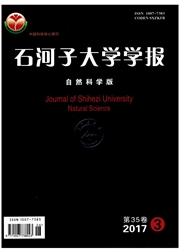

 中文摘要:
中文摘要:
目前的番茄酱废水处理设施,由于频繁驯化污泥,存在耗时较长、处理能力较差和不受控制等缺点,造成了较大的二次污染。本文针对前期筛选获得的番茄酱加工废水处理菌群,研究了人工构建菌群生成污泥时的初始菌株配比及营养条件对污泥形成的影响。试验结果表明:菌株的初始比例对污泥的形成和处理能力有较大影响,但并不是去除能力越强的菌株越多形成的污泥效果越好;降解菌株和沉降菌株初始重量比例1:1时,污泥生长最快(从1000mg/L增至6000mg/L耗时4d)、污泥处理能力最强(TOC去除率超过96%)、污泥结构最好(粒径正态分布且集中于30μm)。研究结果显示:通过控制菌株比例可以有效的缩短污泥培养时间和提高处理能力,既节约了处理成本,又提高了出水水质。
 英文摘要:
英文摘要:
The frequent sludge acclimation of the current tomato paste wastewater treatment process results in waste of time and poor processing ability. In this research, the impacts of the initial strains ratio and nutritional conditions to sludge creation were studied. It was found that initial proportion of complex strains had a direct effect on the forming of the sludge and organic re- moval capability. But too many TOC removal-dominate strains did not necessarily lead to better removal rate. As the complex proportion of TOC removal-dominate strains and settling-dominate strains was fixed on 1 : 1, the sludge had showed the most rapid growth rate (1000 mg/L to 6000 mg/L in 4 days),best TOC removal rate (over 96%),well formed structure (particular size distributes around 30 μm). Adjusting the proportion of complex strains can reduce the time needed for the sludge culturing, improve the removal rate,minimize the cost and improve the effluent water quality.
 同期刊论文项目
同期刊论文项目
 同项目期刊论文
同项目期刊论文
 期刊信息
期刊信息
